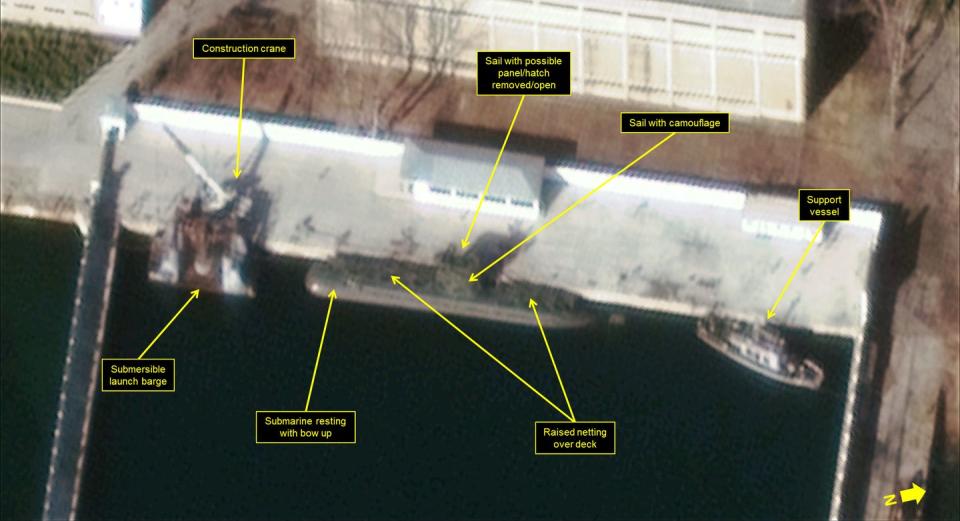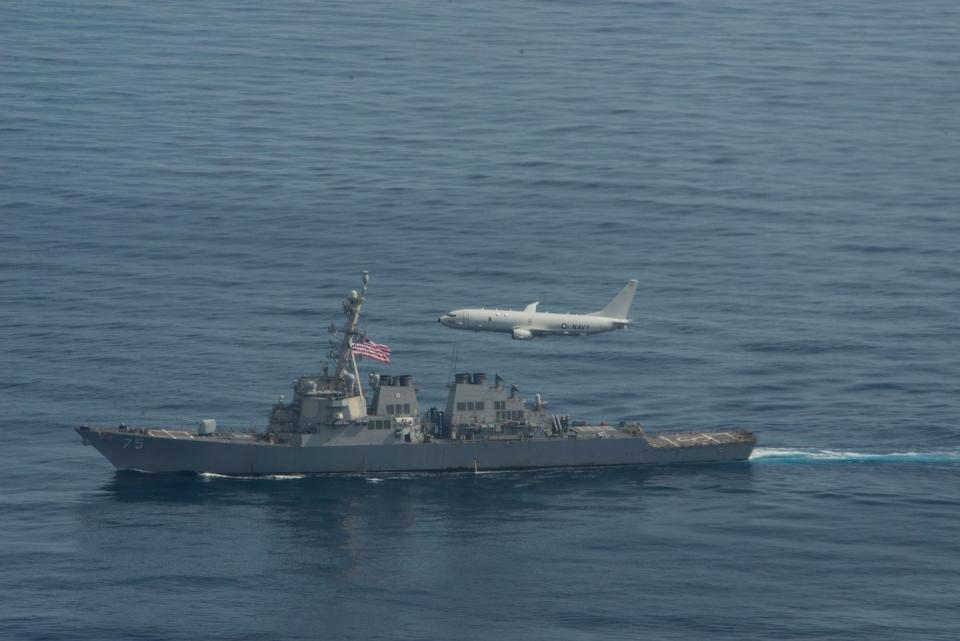North Korea Is Slapping Nukes Onto Submarines
North Korea reportedly tested a ballistic missile launched from a submarine.
The test, which took place earlier this month, indicates that the impoverished country plans to put nukes on submarines.
A second strike capability means that any attack on North Korea could be avenged.
North Korea tested a submarine-launched ballistic missile earlier this month in a bid to make its nuclear weapons arsenal—and leader Kim Jong-un—invulnerable to attack. The short-range ballistic missile test demonstrates that the country is serious about placing nuclear weapons under the Pacific Ocean, where North Korea hopes it can evade detection. It's all part of a plan to use the chilling logic of deterrence to fend off a nuclear attack by an outside power.
The test was carried out on October 19, and involved the Gorae- ("whale") class missile submarine, Hero Ship August 24. First spotted via satellite in 2014, Hero Ship was North Korea's first missile-firing submarine. Unlike U.S. missile submarines, which are nuclear-powered and equipped with 20 launch tubes, Hero Ship is equipped with just one launch tube, built into the sail, and uses a diesel electric propulsion system.
Yep, looks like the wee man from the Defense Expo. Credit to @jeongminnkim who guessed it yesterday. pic.twitter.com/U1OskZyeGT
— Dr. Jeffrey Lewis (@ArmsControlWonk) October 19, 2021
Last week's test involved a new short-range ballistic missile, which flew 267 to 280 miles, according to NKNews.org, a privately owned news website (based in South Korea) that covers North Korea. That's far enough to hit any location in South Korea, including U.S. bases on the Korean peninsula, but not far enough to reach Japan.
Unlike long-range ballistic missiles—which launch their warhead payloads during a quick trip into low-Earth orbit—short-range ballistic missiles often have an "aeroballistic profile," meaning that the warhead never flies higher than the upper atmosphere. This makes them harder to destroy, especially for missile-defense systems that are designed to engage warheads in orbit. A short-range ballistic missile will also have a quicker trip to a nearer target, giving little time for the defender to react.

The expense of developing both a submarine and a submarine-launched ballistic missile indicates that North Korea plans to arm the system with nuclear weapons. The Nuclear Threat Initiative, a Washington, D.C. based nonprofit focused on "reducing nuclear and biological threats imperiling humanity" estimates that North Korea has between 25 and 60 nuclear weapons. Most of those nukes are land-based, meaning North Korea must launch them from a missile mounted on a truck or rail car. The weapons, fixed on mobile launch platforms, are designed to scatter in the event of a crisis, making them more difficult for U.S. intelligence to locate.
The more uncertain the Pentagon is about the location of North Korea's nukes, the less confident it is about finding and destroying them all—and deploying nuclear weapons at sea creates additional uncertainty. Even if a U.S.-South Korean strike destroyed all of the North's land-based missiles, the onslaught might fail to catch all of the country's missile-firing submarines, which could then retaliate by firing their missiles.
The goal is to make a surprise attack (or first strike, in nuclear parlance) so complicated that the enemy can't guarantee it will be 100 percent successful. If just one nuclear weapon survives to devastate a city, the attack will have failed.

Submarines are difficult, though not impossible, to detect. Most of North Korea's submarine fleet is of a 1960s vintage and easy to locate by modern standards. Although Gorae is new, it's not much better. North Korea's missile submarines would likely depart prior to a crisis and then sit quietly on the bottom of the ocean, waiting for launch orders.
Will it work? Maybe not. Submarine expert H.I. Sutton estimates that the submarine can only remain at sea for one month or less, after which it would need to return to port. The sub would also be aggressively tracked by U.S. and South Korean forces whenever it goes to sea, with anti-submarine warfare ships, aircraft, and other submarines prepared to destroy it on short notice. Finally, the submarine would need some ability to receive launch orders, ideally by radio; that link between Pyongyang's inner circle and the submarine crew could be severed by jamming.
North Korea's submarine-basing system is flawed, but still has the potential to be extremely dangerous. It's also key to the survival of the regime, especially Kim Jong-un, and for that reason, North Korea will eventually fix those flaws. If Kim's missile-firing submarines can dissuade his enemies from launching a surprise attack, he'll rest easier—and have a freer hand running his country.
🎥 Now Watch This:
You Might Also Like

